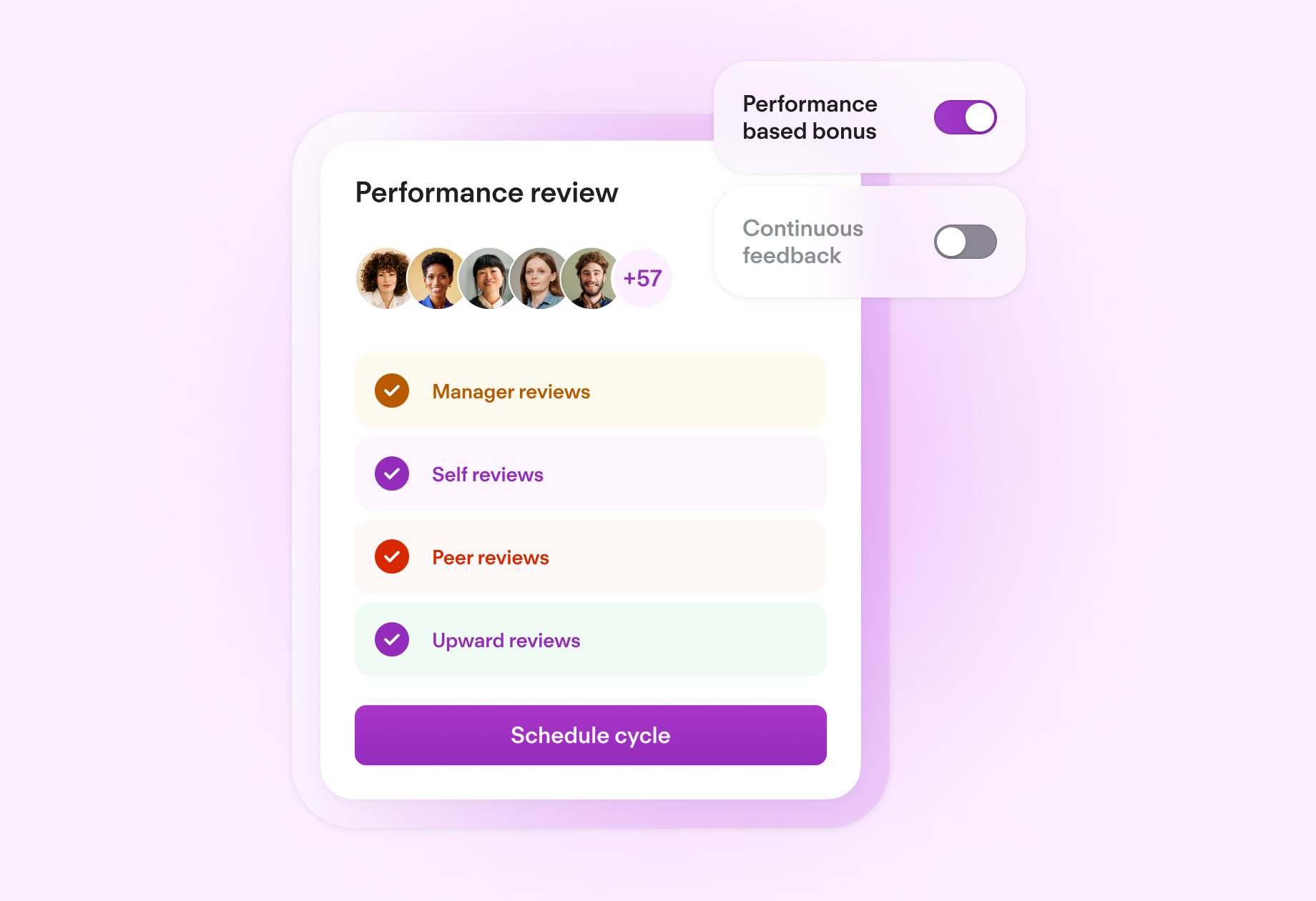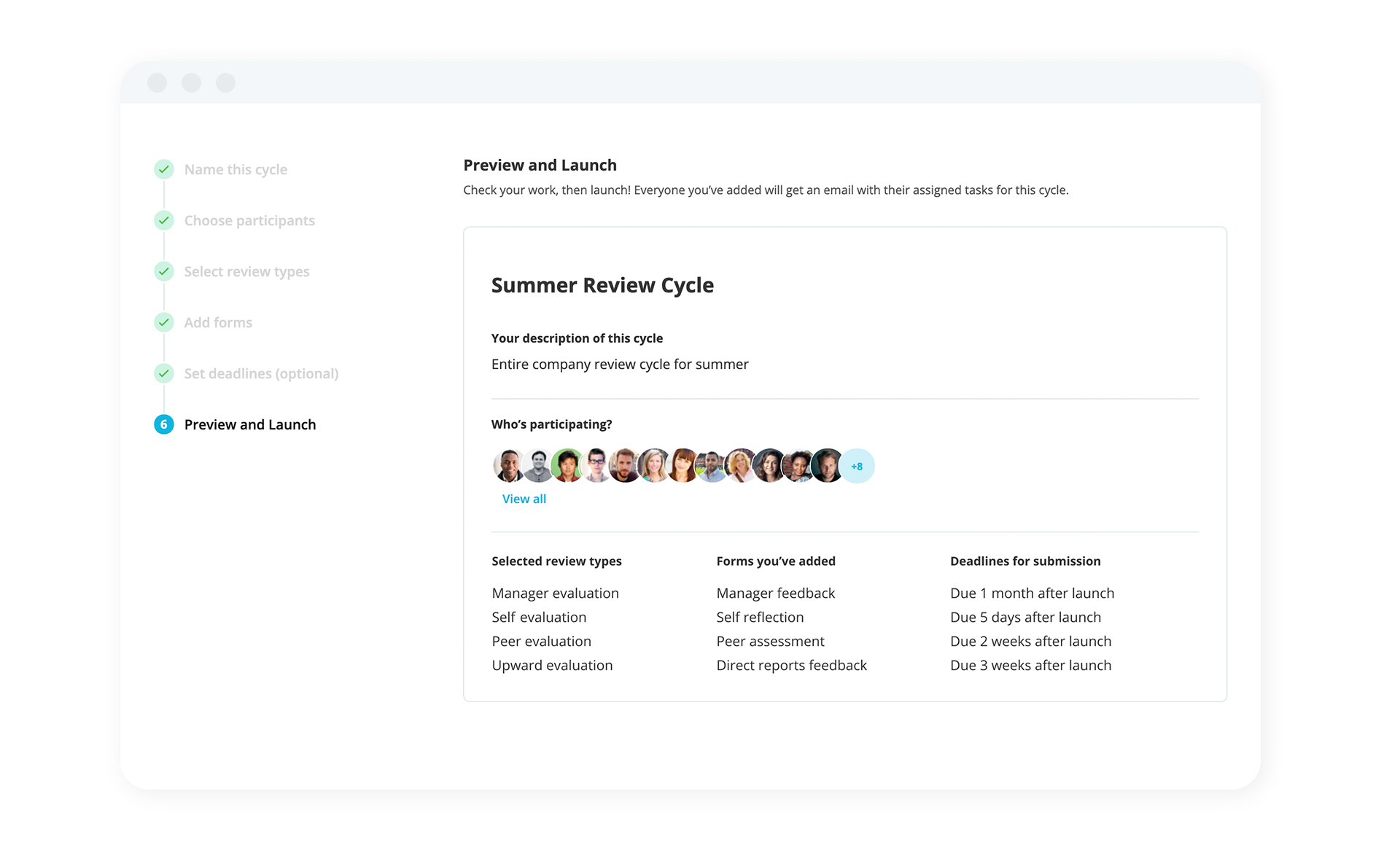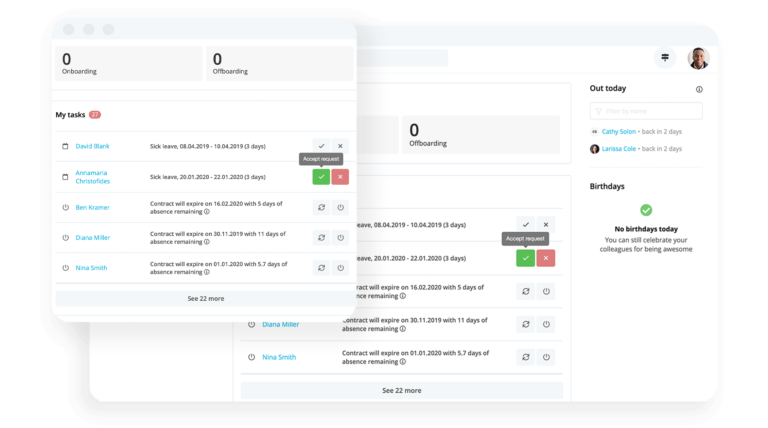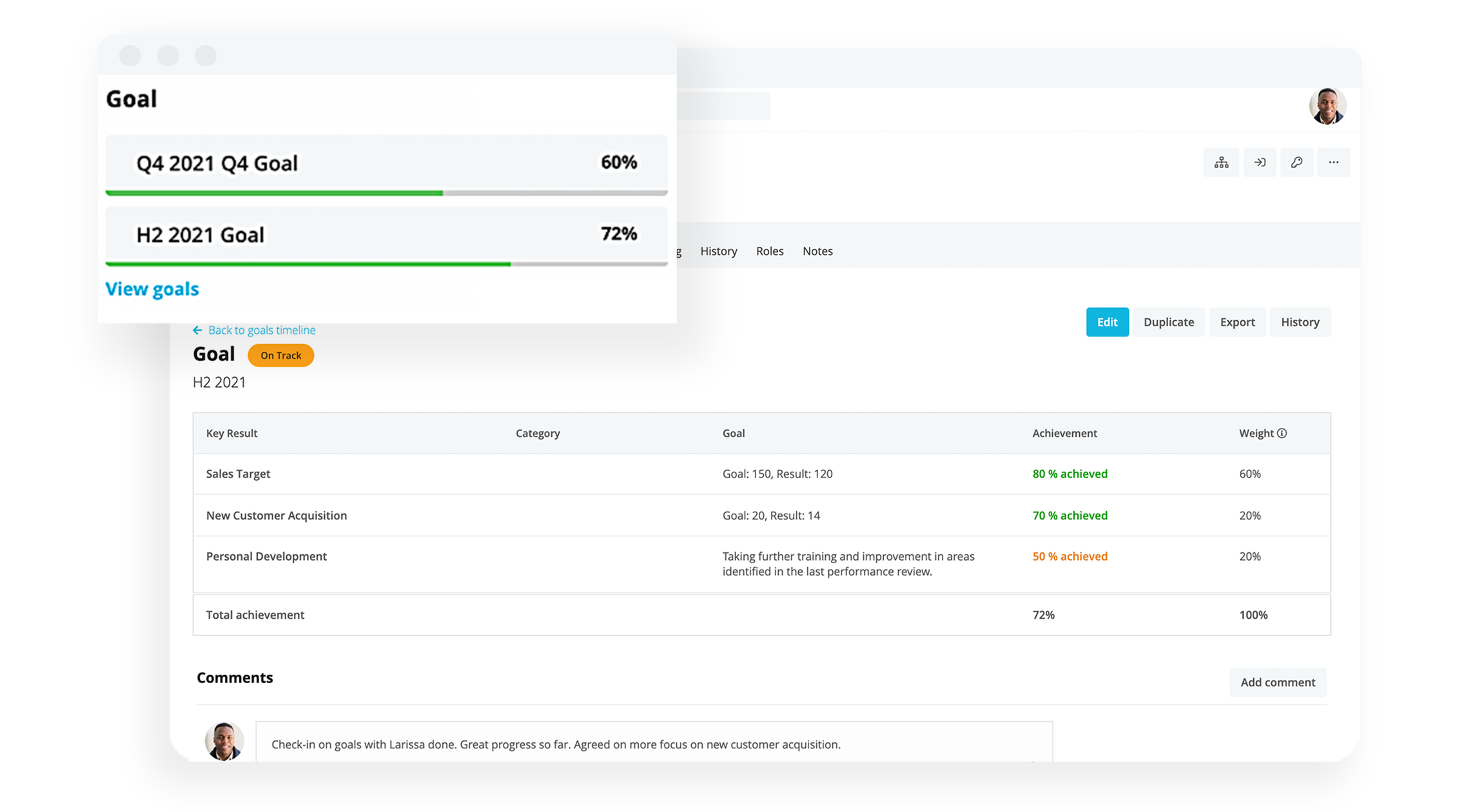Career Progression Framework: What It Is & How to Build One

A career progression framework or plan can be best summed up with the age-old interview question: “Where do you see yourself in five years?”
More likely than not, you’ve heard or asked this question — or some variation of it — during an appraisal or annual performance review. In this article, we’re offering our definitive guide to career progression to help employees and HR alike.
Learn more about optimising employee performance with Personio today.What is career progression?
Career progression is both the feeling and reality of an employee progressing in their career. This is often felt through the development of new skills, promotions, title changes pay raises and other forms of "moving up" in any single organisation.
Fitting into the wider narrative of career progress, it is important for organisations to think about how employees make their way through an organisation. And, most importantly, how they learn, develop and harness new skills to help the business.
Is career progression important to employees?
Some workers know the exact job titles they want to appear on their LinkedIn profile over the next decade. But for most, the future isn’t so clear. In fact, for 60% of UK professionals, career development is an important part of a job offer, and that includes more than just promotions and pay raises.
Your average UK employees wants to:
Gain more industry knowledge
Expand their skills
Feel fulfilled in their work
But, even those with high career aspirations may not know which steps they need to take to achieve their goals — but they want to find out.
What is the most common form of career progression?
Some, but not all, workers advance their careers by ‘job-hopping.’ This entails working at a company for a short period of time, say six months to a year, then moving on to another company at a higher level.
While that might work out well for the individual, that kind of turnover isn’t ideal for the companies they’re hopping to and from.
How does career progression relate to career structure?
Career structure is, essentially, how a job is ‘designed’ to progress in the future. When you’re building a career progression framework, you really need to ask yourself: How is our organisation currently handling career structure?
After all, the way you structure roles (and even how you structure a department) will have a determining factor on how they progress within your organisation. Career structure also matters because it injects purpose into a role from day one.
What does career progression look like where you work?

Is your team looking for new ways to take career progression and performance management to a new level? Personio's performance solution, as part of our all-in-one HR software solution, can help. Find out more today.
See how it worksCareer progression plan vs career development plan
A career progression plan outlines the steps an individual can take to advance their career within a specific organisation, while a career development plan is a broader strategy that encompasses the individual's overall professional growth and development.
Career progression plan | Career development plan |
|---|---|
Outline steps for advancement within a specific organisation | Encompass overall professional growth and development |
Vertical movement and promotions | Acquiring skills and knowledge |
Developed by organisations | Developed by individuals |
What is a career progression framework?
To provide your employees with thoughtful and strategic career and professional development, you first need to build a great career progression framework.
Simply put, a career progression framework supports their long-term development in a structured way. It acts as an occupational roadmap for the employee, with each new title bringing them a step closer to their ideal position.
7 benefits of a career progression framework
By creating a career progression framework, you’re creating a better workplace. More importantly, you’re synchronising your company’s goals with your employee’s goals, improving alignment, communication and long-term success rates.
Here are seven more reasons why you should create a career progression framework:
1. Employees will feel valued
How do you make your employees feel valued and supported? While providing flexible working, amongst other fringe benefits, and even free meals is advantageous, investing in your employees’ future can’t be beat.
A career progression framework shows employees you’re invested in their happiness, growth and success for years to come.
Motivating employees is a key people management skill. Here are the other nine.
2. Employees can gain 'career clarity'
Few employees start a new role or join a new company knowing exactly where it will take them. With a career progression framework, employees can uncover what they truly want in a job, establish their goals and create a viable long-term career plan without having to leave your company.
3. It will boost employee motivation
When employees can’t progress in their careers, they aren’t motivated. When you help employees establish clear, realistic, time-appropriate goals in the form of a career progression framework, they know what they’re working towards and become more motivated to achieve it.
4. It will help build trust
When you pull back the curtain on how your company is structured, through an org chart or similar, and how an employee can move up within it, you show the employee that there are no hidden secrets to succeeding.
This level of transparency can help you build greater trust with employees.
5. It improves employee-manager relationships
A lot of open, honest discussions are required to build a career progression framework; you’ll discuss the employee’s work performance, goals, struggles, and strengths.
By maintaining excellent communication, you can build better ongoing employee relations and stronger workplace culture.
6. Employee retention will go up
In a recent survey by CV-Library and Robert Walters, soft benefits like a clear progression plan and development/training courses were ranked highly as key ways to persuade employees to remain in their current roles.
While the goal of a career progression framework is to help employees advance, offering a progression plan and development opportunities can help them stay within the company, too.
7. Productivity will reign
Eighty-one per cent of UK employers agree that their workers perform better when they receive development and training opportunities. By building out a framework and investing in your employees’ growth, you’re also investing in your company’s growth. This can be done through a professional development plan, too.
Crafting a career progression plan in six steps

Creating a career progression plan is an investment of time and resources. It’s also a blueprint for your business, and can be the difference between achieving long-term or short-term success.
Here’s how you can build a career progression plan for your employees:
1. Start with an organisational chart
Create an organisational chart to cement the overall employee structure of your company. Your org chart should include a hierarchy of the departments along with each position within each department. Once you create your chart, consider how creating new roles or consolidating teams could streamline your business or costs.
2. Evaluate current employees and their positions

Conduct a company-wide employee engagement survey or pulse survey where employees can self-evaluate their work and share their career goals.
If possible, meet with employees one-on-one to discuss their survey answers:
How have they performed in their current role?
Where have they excelled or struggled?
What are their unique career goals?
Do they have the skills required to take on a leadership or management role?
Download our employee survey today, for free, to kick things off.
3. Define the progression of key roles
No matter where an employee is in their career — be it an intern, junior role or manager — they should know what roles they could have in the future, their responsibilities and what they need to do to progress.
For each role in your company, starting with the most critical, define the following:
The title
The tasks involved
The responsibilities
The expectations
Next, break down what someone in that role would need to achieve to reach the next level of career progression, such as:
A certain level of education
A list of needed soft skills
A list of required hard skills
A minimum number of years in the role, industry, or with the company
Short-term goals to achieve
Long-term goals to achieve
4. Implement training and development solutions

To move up in the company or gain expertise, an employee may need mentorship, coaching or access to learning and development courses. Review your company’s learning and development resources and budget to see what can be done to support each employee or department in their growth.
5. Consider lateral moves
Some employees won’t want to become managers or supervisors — and that’s okay. They might want to make horizontal career changes instead of vertical career changes.
But how will this impact their career progression at the company?
The solution: Instead of shoehorning employees into people-management roles, each career progression framework should offer two routes:
One that leads them to a management role
One that leads them to a senior title of their current role (or a similar role)
This way, they can decide which route is best for them when the time comes.
At Buffer, they fully embraced the idea of horizontal career growth for their engineers.
Team member Katie Wilde says, “To deliver great software, we need to encourage engineers to grow horizontally: to grow their knowledge and thought leadership as engineers and do the job they are good at even better. Management should not be the only option for growth and advancement!”
6. Review, revise and approve

Once an employee’s career progression framework has been established, the line manager and employee should meet to iron out any details, answer any questions and revise the framework if needed.
Best practice: Try and make this a collaborative process to increase the employee’s buy-in and the likelihood of successful follow-through.
Once the framework has the approval of the manager and employee, an HR team member should review it to ensure the process, budgeting and resources line up with the company’s abilities and best practices.
Make time for better career progression plans

How much of your HR team's time is taken up by administrative tasks? Would you rather spend that time focusing on things like career progression, performance and helping your people perform at their best? Personio can help save your team time, so you can focus on what matters: your people.
Get in touch with an expertHow can HR support career progression?
As an HR professional, you play a key role in each employee’s career progression. Here’s how you can support your employees and management team while helping them achieve their goals:
Best practice | How to do it |
|---|---|
Schedule check-ins | At least quarterly, to identify any hurdles, improvements and successes. |
Get inspired | Try and find new ways to help employees progress (freeing up development budget, etc.) |
Develop training programmes | May include the need to conduct training needs analysis, setting deadlines for courses, finding workshops to attend or opening up time for mentorship meetings. |
Onboarding and progressing | Include frameworks in onboarding sessions, so new employees have visibility and transparency. |
Keep frameworks fluid | Be open to change and iterate as you go. There's no perfect way to do progression, you need to learn it along the way! |
Start investing in employee career progression
Career progression should feature heavily in your performance management cycles. If it isn't, you may be missing out on a wellspring of opportunity. Using Personio's all-in-one HR software, you can put performance back on the map.
Make sure you never miss a performance cycle again, running automated cycles that run seamlessly between employees and line managers. Personio's performance management software can help develop your people at scale.
Whether your team is just picking up the topic or is in urgent need of a solution, speak with an expert today to see how HR software can help. Our team is here to help your team make time for what matters: your people.


